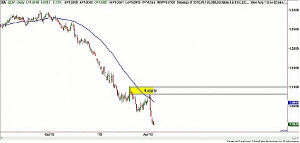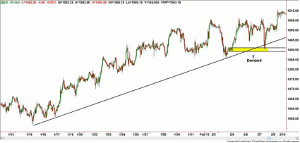We've all heard that knowledge is power, but it has to be the proper knowledge, if you are to get the results you're striving for, writes Gabe Velazquez of Online Trading Academy.
Trading is unlike any other profession in many respects. This is true because of the multitudes that try doing this profession, very few ever garner the results they strive for. One aspect to this lack of success can be directly attributed to acquiring the wrong kind of knowledge. The fact is, most people that learn trading in a conventional manner are trading in a high-risk, low-probability manner. This is because the technical patterns and indicators used to trade in all the books that have been written are all lagging. Since they are calculations of price and volume, by definition they will lag price, thus they will not provide a trader with the lowest risk entry points. This doesn't mean that all indicators are totally useless. In fact, some can be very helpful if used in the proper context.
Recently, a prospective student enthusiastically shared with me that he had just bought the yen. The first thought that came to mind was that he would probably make a good student since the yen has been steadily declining and he was buying low. Never mind that the trend is down on the yen and rallies should be sold, the fact that he was buying intrigued me. That was until he told where he had bought it, and more importantly his rationale for doing so.
The reason why he had bought the yen was because it had just closed above its 50-day moving average. As we can see from the chart below, this was indeed the case. There's only one problem: he bought it after the yen had already been rallying into an area where we see evidence of prior selling. We can see that the trade was very risky, and had a very low probability of making money because of all the factors we just mentioned, and unfortunately the outcome was not very surprising. There is nothing wrong with buying when the trend is down, however, the buying should be done when the trend is extended, and more importantly, at or near a quality demand zone. In this particular case, none of these factors were present.
Similarly, in another event, another would-be student expressed his bearish position in the E-mini S&P 500 because of a break of a trend line. In the chart below, we can see what he was looking at, and you guessed it: he also produced the same result. He made the same mistake the other trader made in the yen, just on the sell side. He sold after a sizable drop in price into a level where we see evidence of buyers.
In looking at both these examples, it was clear that trend mattered, and that using demand to enter an uptrend, and conversely using supply to enter a downtrend would have worked better. Keep in mind that even if these levels had not worked that risk was miniscule compared with the risk assumed by these other traders. This mistake is not very uncommon among traders who don't know how the markets really work
We've all heard that knowledge is power-which I'm in total agreement with-but it has to be the proper knowledge. This means knowledge that produces-if applied with consistency and discipline-low-risk profits regularly. If you are not getting the results you want, then you need to do something different. This just makes common sense, wouldn't you agree?
By Gabe Velazquez, Instructor, Online Trading Academy























